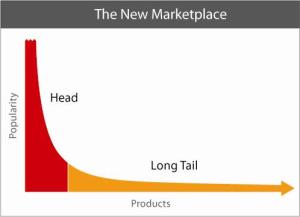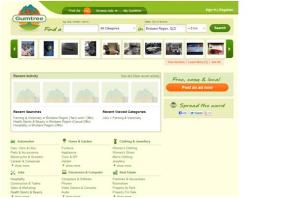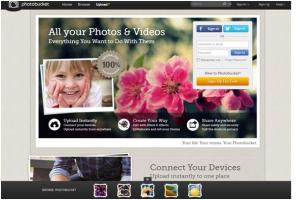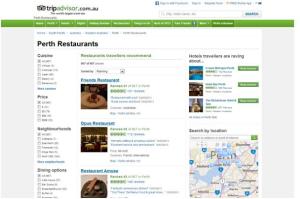Enterprise 2.0 strategies are slowly becoming more prevalent in organisations and their business strategies. Coined by Andrew McAfee in 2006, Enterprise 2.0 is described as the application of Web 2.0 to the enterprise (Newman, Thomas & Ebrary, 2009). In other words, it is the strategic integration of Web 2.0 stratiegies and technologies such as social networking, RSS and wikis, into the enterprise (TechTarget, 2014). Many organisations use social tools to achieve enterprise objectives; such companies include Motorola and Red Ant.
ILOG
There are many comanys that use social tools and wikis to achieve enterprise objects. Such companies include BBC, Google, Lockheed Martin, ILOG, Motorola etc. These companies are deploying the tools of emergent collaboration and adopting the technologies and philosophies of Web 2.0 (McAfee, 2010). These companies achieve this by generating and sharing knowledge and keeping knowledge up to date in dynamic environments (McAfee, 2010). ILOG is an international software company that installed a wiki in 1999 and is now composed of 37 000 web pages and has over 700 users (Openness and Authorship) (Buffa, 2006). This is an example of Openness and Authorship in the enterprise. There are four different zones, each one running a wiki. The four wikis are the R&D wiki, the Global wiki, the External wiki and the Wiki for employee representatives, an example of Acting Globally in relation to Wikinomics business model principles (Buffa, 2006). The roles of the four wikis as established by Buffa, 2006, are
- The R&D wiki: free read and write access for all members of the R&D division but not accessible to other ILOG employees
- Global wiki: read access for all ILOG employees and a majority of pages have freee read/write access
- External wiki: accessible externally from outside the company
- Wiki for employee representatives: located on an isolated server
The four different zones were created by ILOG’s WebCore team in order to protect documents and adopt a global protection system (Buffa, 2006). The wiki enabled ILOG to increase productivity, sharing of information and making knowledge easier to access and search.
Red Ant
Red Ant is a web design and development firm that creates and builds digital products (1 Red Ant, 2014). Red Ant uses a wiki as a repository for storing information, collaboration and sharing tool. Red Ant utilises the wiki to store meeting note, present visual designs, share code, client access to desings and prototypes, present feedback and stats analysis in real-time etc (2 Red Ant, 2014 & Erinoff, 2011). The wiki also includes external parties and has also become the main interface with connecting with customers (2 Red Ant, 2014). The software used is Confluence, developed by Atlassian. The organisation uses a central editing model and aimed to create flexible communication, both within the company and with clients (2 Red Ant, 2014 & Erinoff, 2011).
Red Ant’s utilisation of Confluence and the wiki has helped them achieve Enterprise 2.0 objectives, mainly increasing their productivity by making collaboration easier and team work more effective, made innovation and product development faster by sharing information and data and improved their staff engagement by enhancing internal communication. The main outcomes resulting from the integration of the wiki were stronger communication both internally and externally, centralised data saves and time and the empowerment of team members (Erinoff, 2011). In relation to the Wikinomics business model, the organisation uses Peering and Sharing by using Confluence and collaborating and sharing their intellectual property and content on the wiki.
Both of these companies use social tools to engage staff and increase productivity within the enterprise. Additionally, external benefits can be received by using social tools such as wikis. By using social tools, companies can attain business goals and enterprise objectives.
Thanks for reading
Laura
References
McAfee, A. (2010). Enterprise 2.0. The Canadian Manager, 35(1), 19-20,3. Retrieved from http://search.proquest.com/docview/846793494?accountid=13380
Newman, A., Thomas, J., & Ebrary. (2009). Enterprise 2.0 implementation. New York: McGraw-Hill.
TechTarget. (2014). Enterprise 2.0. Retrieved from http://whatis.techtarget.com/definition/Enterprise-20
BBC. (2014). Inside the BBC: Mission and values. Retrieved from http://www.bbc.co.uk/aboutthebbc/insidethebbc/whoweare/mission_and_values/
IBM. (2014). About IBM. Retrieved from http://www.ibm.com/ibm/au/en/
Red Ant. (2014). Red Ant. Retrieved from http://www.redant.com.au/
Red Ant. (2014). How we Wiki. Retrieved from http://www.redant.com.au/agile/how-we-wiki/
Erinoff, E. G. (2011). Case Study: Community of Practice Based on a Wiki.
Buffa, M. (2006). Intranet wikis. In Proceedings of the Intraweb Workshop, 15th International Conference on World Wide Web, Edinburgh, Scotland.













